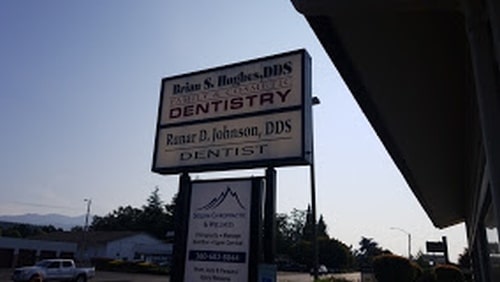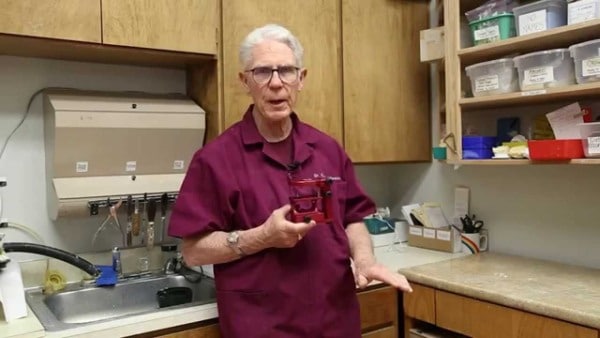Runar Dean Johnson was born in the Philippine Islands in 1938 where his father was a civilian contractor for the United States Navy. Impending war conditions forced his family’s return to their home in Bremerton, Washington. Dr. Johnson graduated from Bremerton High School in 1957; attended Olympic College in Bremerton; Baylor University, Waco, Texas; and received a B.A. in Biology from Carroll College, Helena, Montana in 1962. He received a D.D.S. degree from the School of Dentistry, St. Louis University, St. Louis, Missouri in 1966. After serving as a dentist at Great Lakes Naval Training Center, Great Lakes, Illinois, Dr. Johnson moved his family to Sequim, Washington where he has maintained a dental practice since that time. Joining an alternative dental practice in Bellevue and Northgate, Washington, he has continued to add to his vast knowledge of TMD, myofacial pain, jaw orthopedics, development of the AccuLiner used for accurate occlusion; and use of the most bio-compatible materials for restorations and other dental procedures.
Recently, Runar D. Johnson, D.D.S. graduated from The School Of Integrative Biologic Dental Medicine as a Board Certified Naturopathic Physician.
Our bodies were formed and intricately fashioned. (Psalm 139) It is Dr. Johnson’s desire that we know how to take care of this amazing gift. Dr. Johnson and his wife, Lavina, live in Sequim, Washington. They enjoy 3 grown children and 8 grandchildren.
Education
Runar D. Johnson, D.D.S. has gained a vast knowledge of dentistry through years on continuing education study in varied subjects, including
- Practical operative dentistry
- Jaw orthopedics (orthodontics)
- TMD (temporomandibular jaw disorder)–its cause and modalities of treatment
- General health including multiple study courses, numerous audio and video series as well as dozens of books and continuing lectures.
- Preliminary and Advanced courses in Ozone therapy as it pertains to dentistry.
- Body detoxification from toxic dental materials such as amalgam mercury, chronic unresolved bone infections, and other toxic products used traditionally in dentistry.
- Many years attending monthly continuing dental study clubs involving general dentistry, TMJ, orthodontics and toxicology.
Nutritional Health Studies includes courses and lectures by H.H. Robertson, Jeffrey Bland; Dr. Loomis, D.O.; Hal Huggins, D.D.S; Richard Murray, M.D.; Sherrie Rogers, M.D.; Robert Brandford, MD.
Runar D. Johnson, D.D.S. has good standing and long-term membership in
various dental organizations:
- lAO: International Association of Orthodontist
- AAFO: American Association of Functional Orthodontists
- IAOMT: International Association of Oral Medicine and Toxicology.
- American Academy of Biological Dentists
- Holistic Dental Association
Zirconia Implants
Traditionally, lost teeth were replaced with bridges or dentures. However, this meant that natural tooth substance had to be removed to place bridges, often jeopardizing the health of the surrounding teeth. Dentures on the other hand can be uncomfortable and ill-fitting. After removal of teeth the jawbone has the tendency to recede.
In 1964, implants finally revolutionized dentistry making tooth replacement possible without damage to neighboring teeth and offering denture patients stability and comfort.
The material of choice seemed to be titanium due to its mechanical and biological properties, therefore, compatible with most people. However, it has been proven that the immune system has an unfavorable reaction to the metal. Furthermore, it is being discussed that the use of dental alloys will increase the allergy rate significantly.
Ceramic materials seem to be the ideal replacement for metals due to their superior cosmetic and organic properties. Zirconium dioxide combines biocompatibility with mechanical properties well beyond that of titanium. In the mid-90’s the first zirconium dental implant was developed in Switzerland. Since 2004 implants have been certified in Europe and used in over 2000 patients.
Advantages over titanium:
- Zirconium dioxide is not readily reactive with other elements forming few or no chemical compounds.
- Zirconium dioxide is white in contrast to titanium, which is grey making it cosmetically pleasing.
- Plaque adhesion to zirconium dioxide is nearly non-existent. By contrast, plaque adhesion to polished titanium is extremely high.
- Gums react very well to zirconium dioxide. This is generally a problem with titanium due to the release of free radicals, which are believed to play a major role in gum disease.




